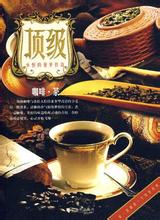Introduction to the flavor and taste characteristics of coffee from Chilmel Manor, Rwanda
Clans began to form kingdoms in the 15th century, and in 1700 there were eight kingdoms in Rwanda. The Kingdom of Rwanda, ruled by the Tutsi "Nyiginya" clan, has been growing since the mid-18th century. The provinces that peaked under King Kigali IV in the 19th century before 2006 are as follows: Butare, Byumba, Cyangugu, Gikongoro, Gisenyi, Gitarama, Kibungo, Kibuye, Kigali, Kigali Rural, Ruhengeri, Ruhengeri Umtala province (Umutara).
A new administrative division will be implemented on January 1, 2006. The whole country of Rwanda is divided into four provinces (intara), the Province de province (intara), the north province (Province du Nord), the western province (Province de province), the southern province (Province du Sud), the city of Kigali (Ville de Kigali) and one municipality (Kigali), with 40 counties and cities (akarere) and 416 townships (umujyi).
Before 1 January 2006, the country was divided into 12 provinces. Later, in order to solve the problems caused by the massacre in Rwanda in 1994, the government decided to reorganize the political district. The first reason is decentralization to the local level, as the authorities believe that excessive concentration of government power is the main factor leading to genocide; the second is to diversify the ethnic groups in each political region. to reduce the division between ethnic groups, the divide between the Congo basin and the Nile basin runs through Rwanda from north to south, with about 80 per cent of the country draining from the Nile and about 20 per cent drawing water from the Ruzizi River and Lake Tanganyika. The longest river in the country is the Niabalongo River (Nyabarongo River) in the southwest, which turns north, east and southeast into the Ruwuwu River and forms the Kagera River, which flows due north along the eastern border of Tanzania. Both the Niabarongo River and the Cagella River will eventually flow into Lake Victoria. There are many lakes in Rwanda, of which Lake Kivu is the largest. The lake is located at the bottom of the Aberdeen Rift Valley and extends along the western border of Rwanda. With a maximum depth of 480 meters, it is one of the 20 deepest lakes in the world. Several other larger lakes include Lake Burera, Lake Ruhondo, Lake Muhazi, Lake Rweru and Lake Ihema, of which Aishma is the largest in a series of lakes in the eastern plain of Akagera National Park.
The taste of Rwandan coffee is described as "grass aroma" with tropical climate characteristics. In addition to the sweetness of fruit, this coffee also gives people a feeling of freshness, clearness and freshness. Bourbon coffee grown in Rwanda is amazing for its sweet fruit, full-bodied, unrestrained and lingering aftertaste. This coffee has a delicious, citrus sweetness and a deep chocolate color. Rwanda has about 33000 hectares of coffee plantations and 500000 people are engaged in the coffee industry. With the good natural conditions of high altitude and fertile volcanic soil, the country's fertile soil and suitable climate contribute to plant growth, and coffee trees seem to be driven or forced to grow upward, or because they grow too fast to produce the best coffee beans. The beautiful country of thousands of hills Rwanda has a long and rich culture for growing highland coffee, mainly high-quality Arabica coffee. Rwanda is the only country in the world that can fully enjoy the harmony between soil, altitude and climate. In this unique growing environment, high-quality coffee from Rwanda has a distinctive taste and aroma. Bourbon coffee grown in Rwanda is one of the original varieties of Arabica coffee in the world. Arabica coffee grown in Rwanda (Rwanda) has been famous all over the world for its unique fruit sweetness and rich grass aroma since the 1920s. In recent years, the Rwandan government has taken positive measures to vigorously promote coffee production, set up coffee production cooperatives in various places, and give technical guidance and financial support to farmers, so that coffee production has made considerable progress.

Important Notice :
前街咖啡 FrontStreet Coffee has moved to new addredd:
FrontStreet Coffee Address: 315,Donghua East Road,GuangZhou
Tel:020 38364473
- Prev

Coffee flavor and taste characteristics of Renas Manor in El Salvador
The Salvadoran flag was launched in 1822, rescinded in 1865 and restored in 1912. The Constitution of the year of the Salvadoran Flag in 1972 was officially established as the national flag. The national flag is rectangular, with a ratio of length to width of 335 to 189. From top to bottom, the flag is connected by three parallel equal horizontal rectangles of blue, white and blue, and the central part of the white part is painted with the national emblem. Because El Salvador used to be
- Next

Introduction to the flavor and taste characteristics of Honduran manor coffee with rich and balanced taste
From its independence in 1821 to 1978, Honduras has had 139 coups, making it one of the countries with the most frequent coups in Latin America. Ramon Bilda Morales of the Liberal Party won the election in 1957 as president. Oswald Lopez Arellano, commander of the armed forces, launched a coup instigated by the United States in 1963, overthrew the Morales regime, and was elected general in 1965.
Related
- Does Rose Summer choose Blue, Green or Red? Detailed explanation of Rose Summer Coffee plots and Classification in Panamanian Jade Manor
- What is the difference between the origin, producing area, processing plant, cooperative and manor of coffee beans?
- How fine does the espresso powder fit? how to grind the espresso?
- Sca coffee roasting degree color card coffee roasting degree 8 roasting color values what do you mean?
- The practice of lattes: how to make lattes at home
- Introduction to Indonesian Fine Coffee beans-- Java Coffee producing area of Indonesian Arabica Coffee
- How much will the flavor of light and medium roasted rose summer be expressed? What baking level is rose summer suitable for?
- Introduction to the characteristics of washing, sun-drying or wet-planing coffee commonly used in Mantenin, Indonesia
- Price characteristics of Arabica Coffee Bean Starbucks introduction to Manning Coffee Bean Taste producing area Variety Manor
- What is the authentic Yega flavor? What are the flavor characteristics of the really excellent Yejasuffi coffee beans?

